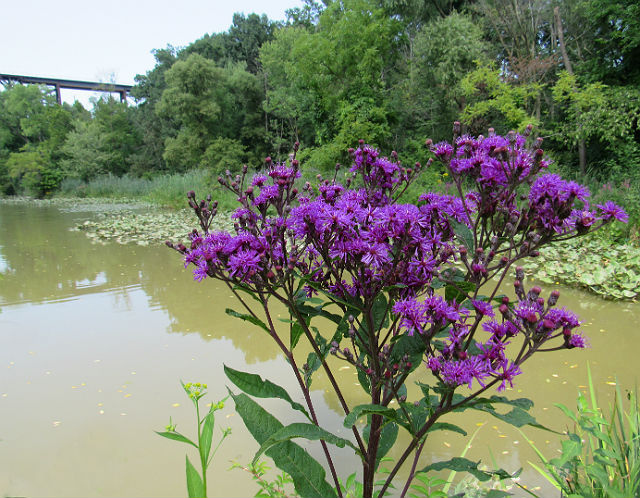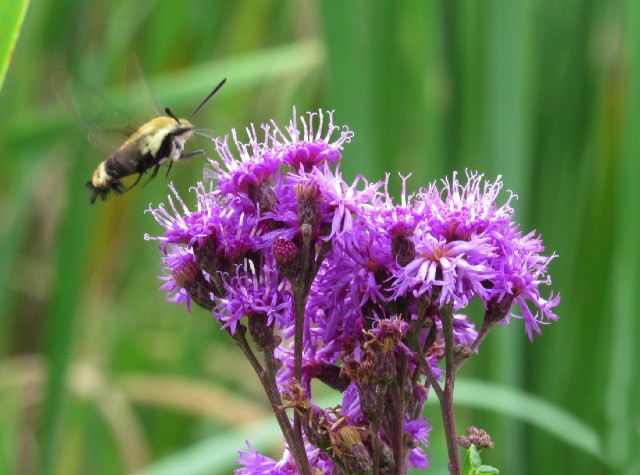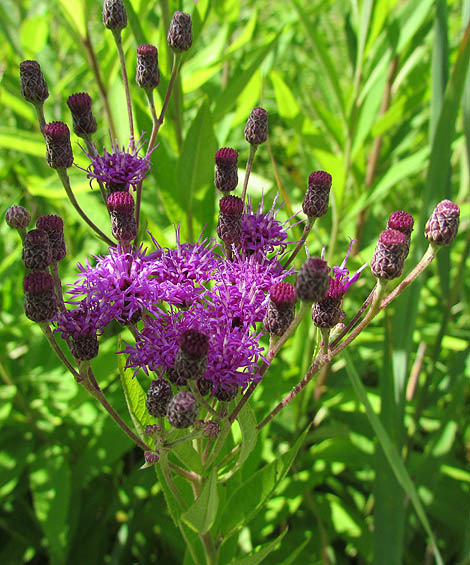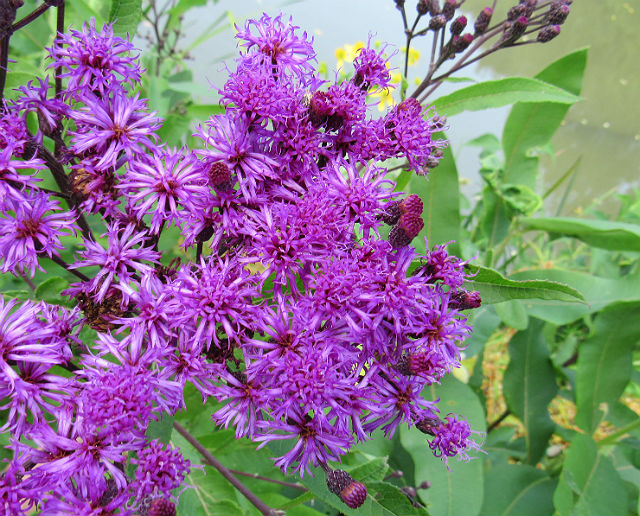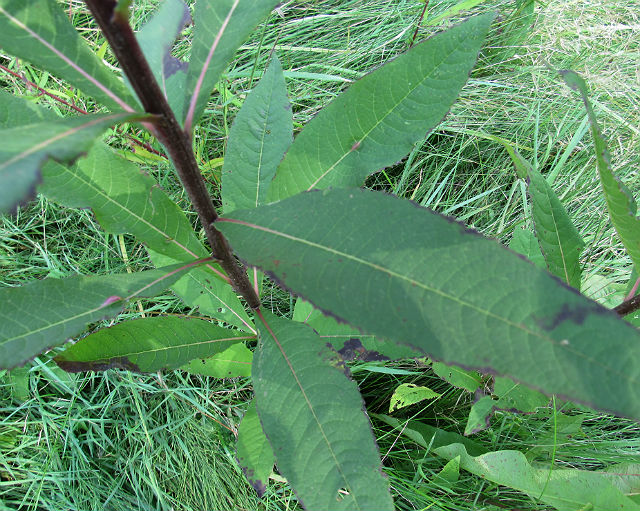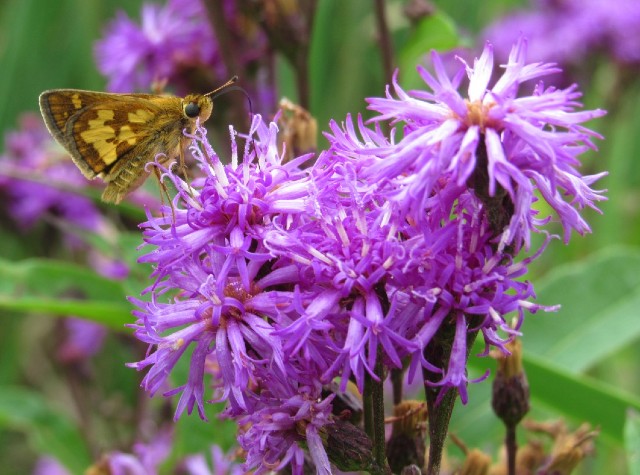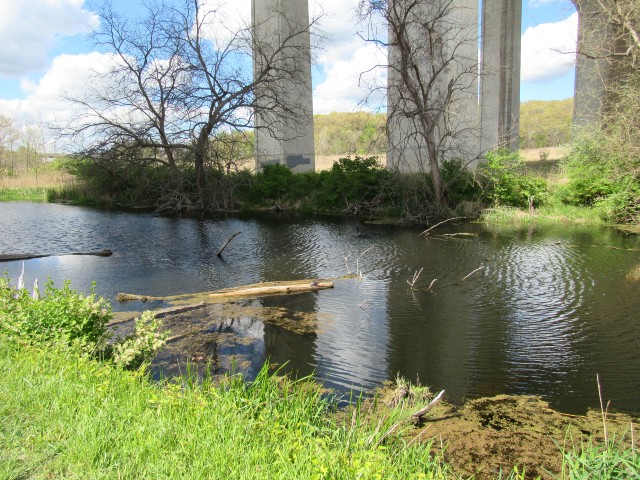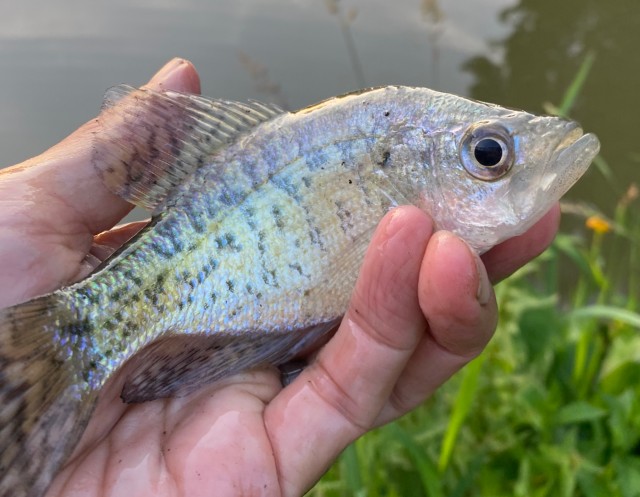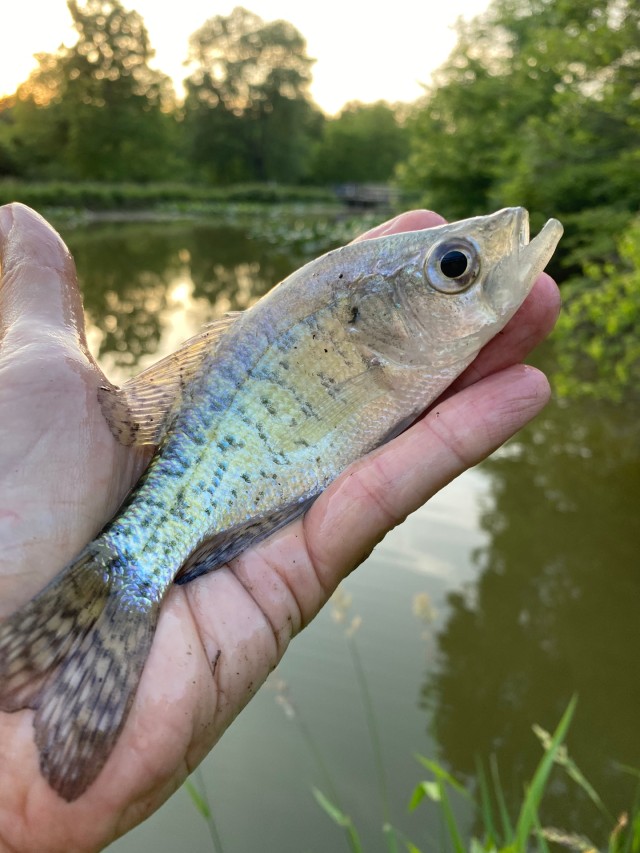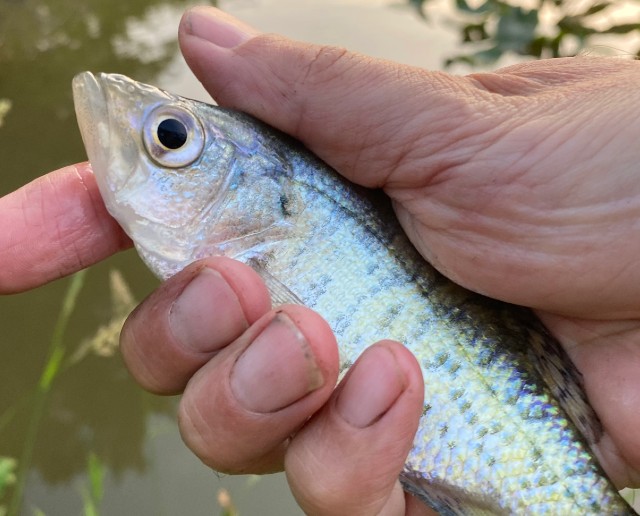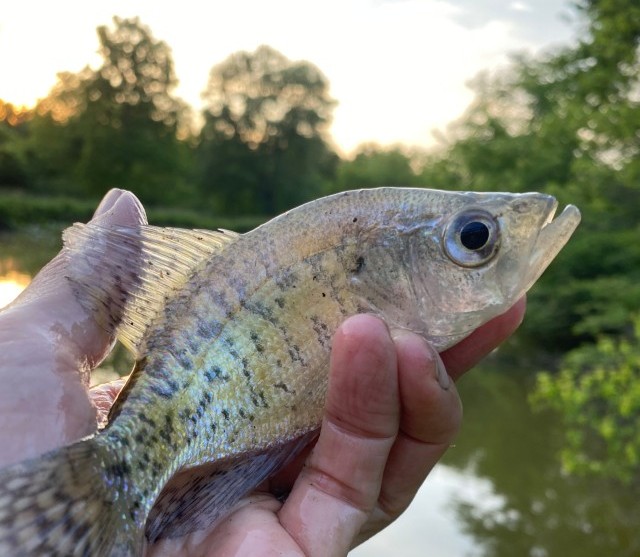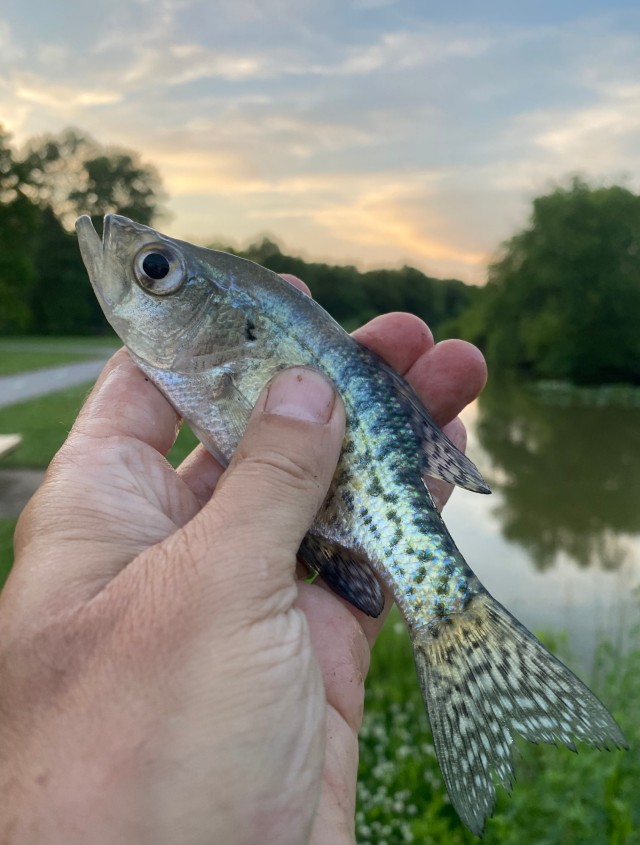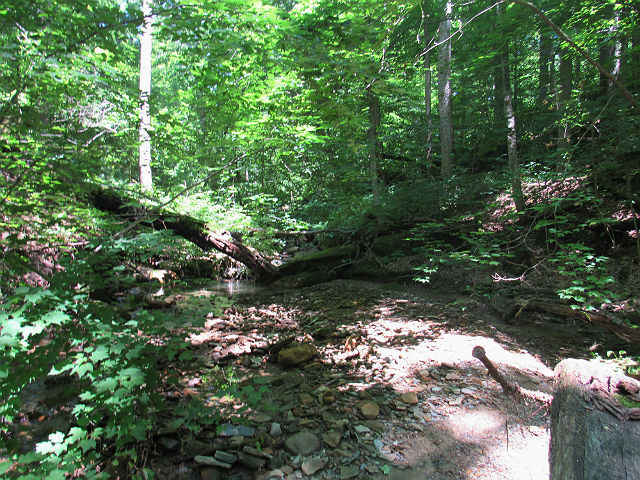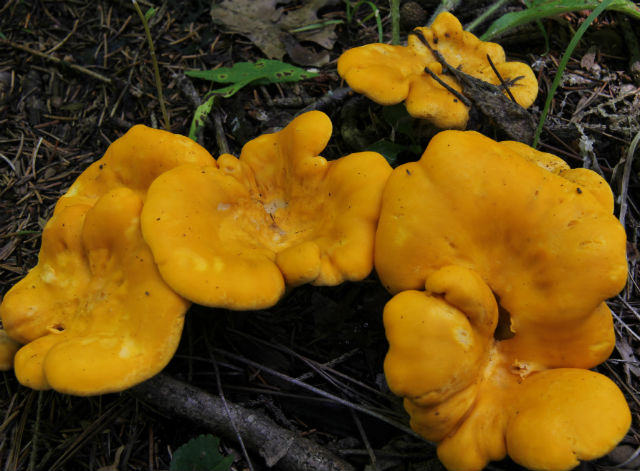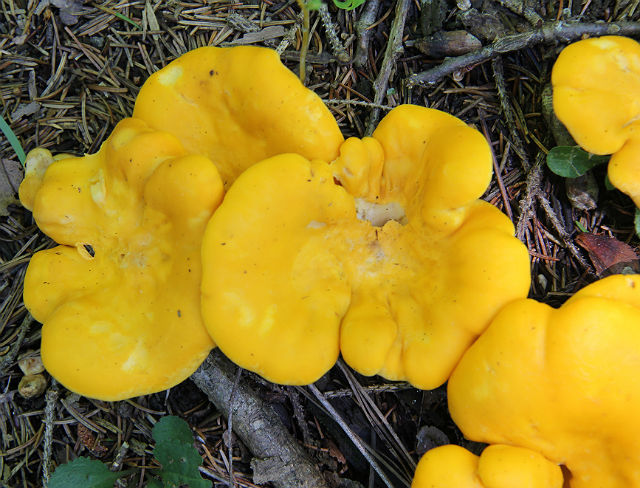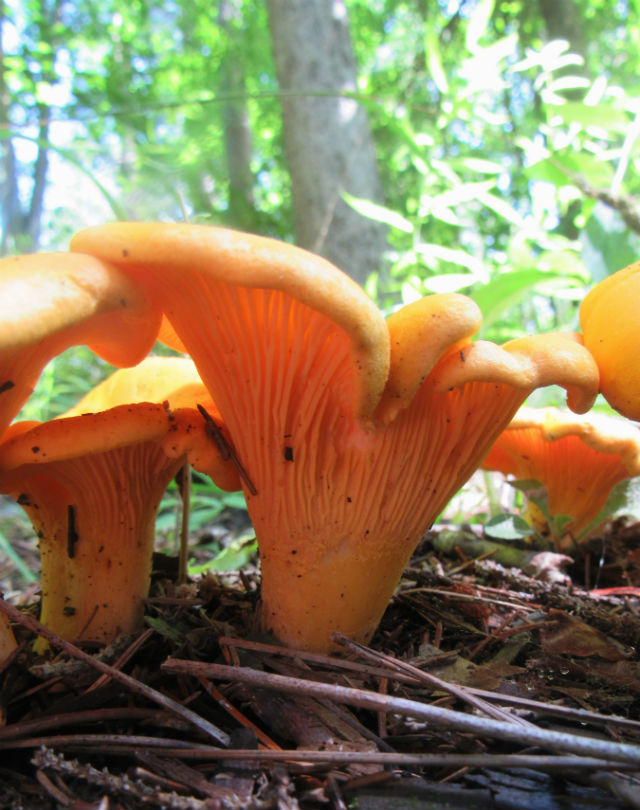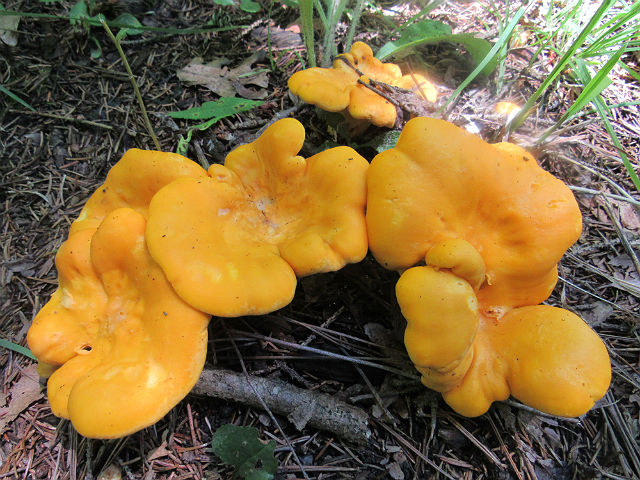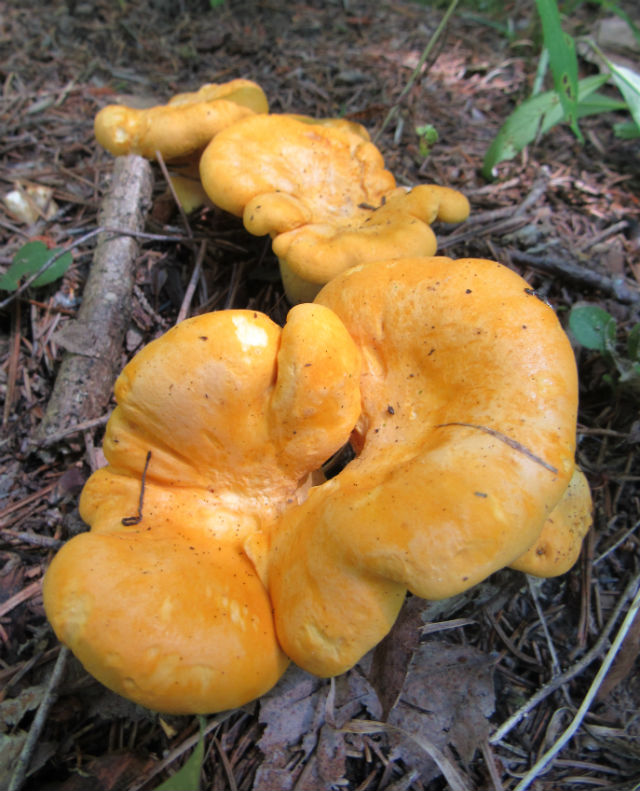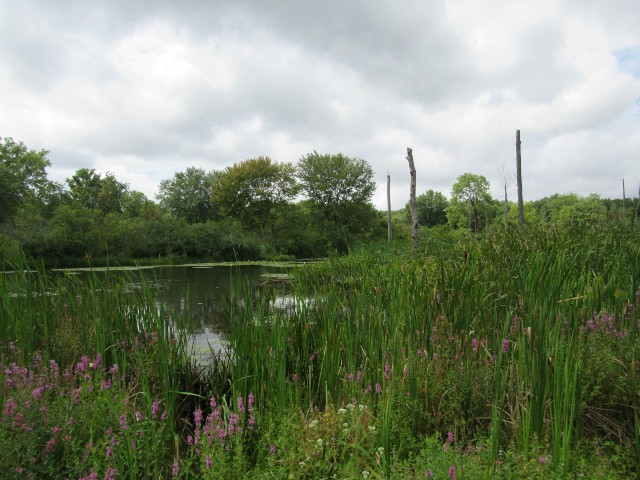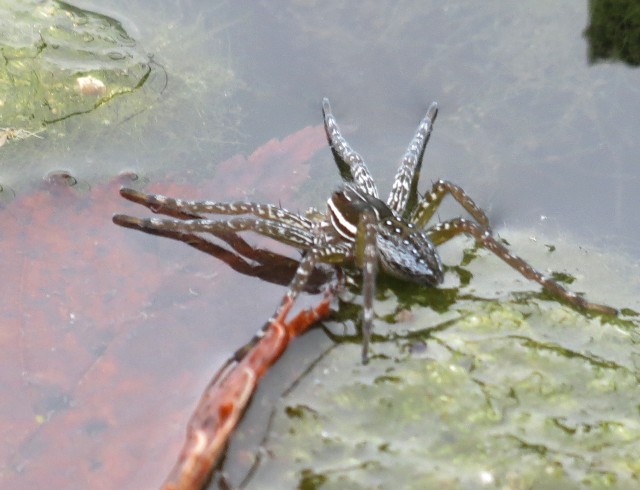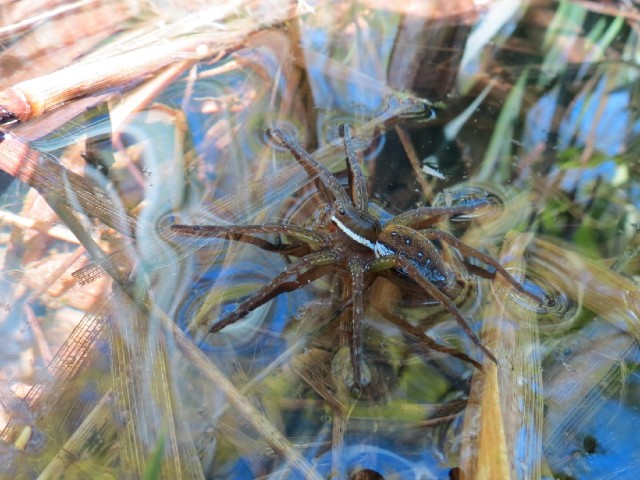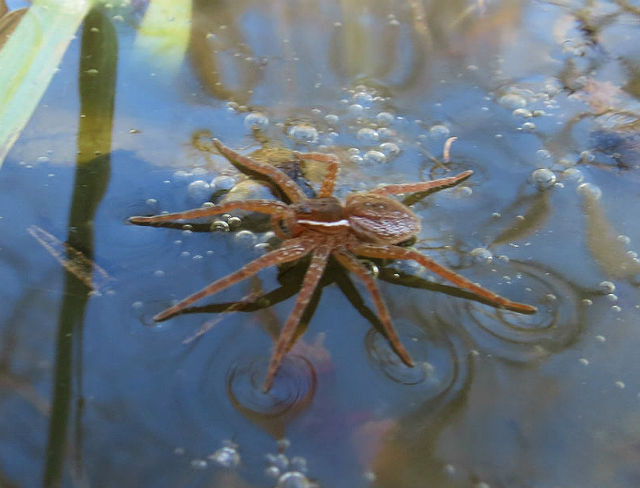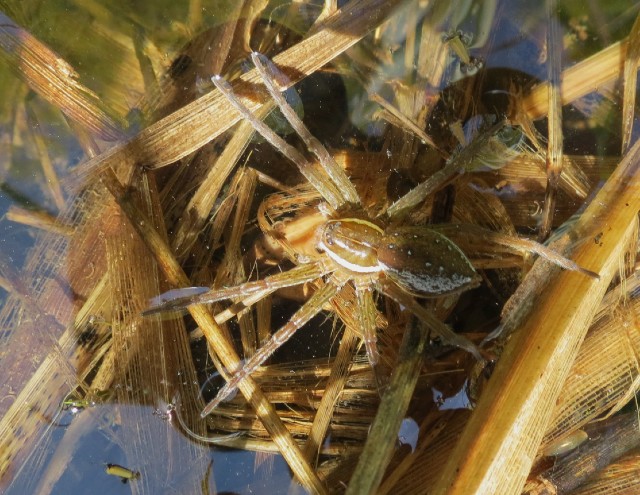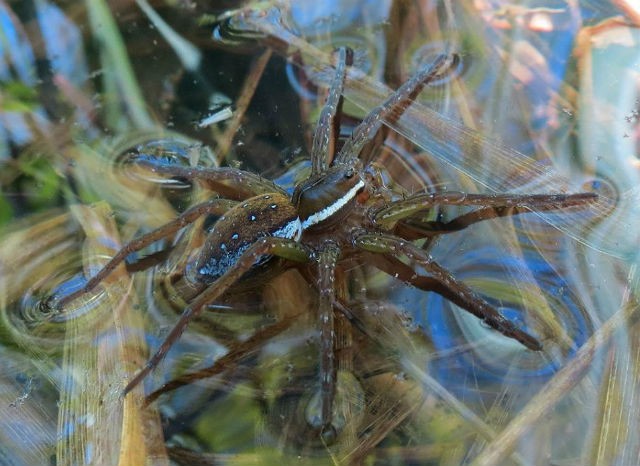I’ve been seeing a lot of this plant while out on my hikes in recent weeks; it’s kind of hard to miss.
Named for its tough stem, this plant has excellent posture. Its flowers of are like purple torches in the late Summer landscape and when blooming next to Goldenrod, it creates a picturesque scene.
This plant prefers to grow in areas such as meadows and pastures where the soil is fertile and conditions are moderately damp. I photographed these at Canalway Center and along the Ohio & Erie Canal Towpath.
Ironweed has a highly visible dark red stem and grows over seven feet tall. It is widely branched at the top. Loose clusters of quarter-inch flowers give it a burst of vibrant color.
Attached to the stem are lance-shaped, pointed leaves that have short downy hairs on the lower surface.
This species flowers in July to September. Not only is it nice to look at, it is also an excellent nectar plant and is visited by many species of butterflies and bees.

